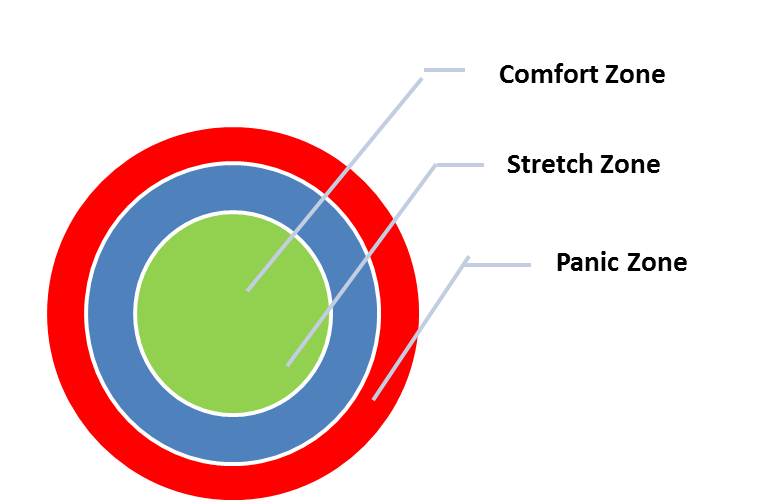Dancing at the edge of comfort: How to develop employees without demotivating them
/I've spent this past summer drafting the manuscript to my first book entitled Employee Development on a Shoestring, which is scheduled to be published by ASTD Press in early 2012. My book is full of practical ideas and implementation tips for various ways to help employees develop new knowledge and skills outside the classroom. I'll be blogging various tidbits to whet your appetite before the big book release. Here's the first: enjoy and let me know your thoughts in the comments below!
Development assignments should push employees to develop just beyond their comfort zone, but no further.
There are three performance zones:
The Comfort Zone – we are fully performing our role. We experience ‘unconscious competence’ and mastery. We are able to perform easily and without exerting great effort. We do not find our work overly challenging anymore. We may be doing just enough to get by if we get too comfortable.
The Learning or Stretch Zone – just outside the comfort zone, this is where we leverage what we know and do well and are able to focus energy on new skills, tasks, or requirements. We are in a state of ‘conscious competence’ where we are building skills but have to be conscious of how we are performing to avoid mistakes and missteps. Our new responsibilities are manageable.
The Panic Zone – if we push employees too far and stretch them beyond their capacity, they may become anxious, confused, and discouraged by so many unknown or unpracticed variables. Here we operate in a state of ‘conscious incompetence’ and even ‘unconscious incompetence’, which feels uncomfortable and which we would like to avoid.
Get it 'Just Right'
When identifying appropriate employee development methods, we need to consider the level of challenge that each type of development activity would present to the employee. The activity or assignment should be challenging, but not so hard that it feels impossibly difficult. Here is a good model to help you match the challenge to the employee's needs. Our goal is to ensure that the employee is just at the edge of their 'comfort zone' -- in the 'learning' or 'stretch' zone -- but not too far and in the 'panic zone'.
So, yes, you could stretch someone too far. And you could stretch someone too little. But you have to identify the sweet spot, the Learning Zone, to get it just right.
What do you think? Have you found this to be true with your or your employees' developmental challenges?
Sign up to my free weekly newsletter and get more actionable tips and ideas for making yourself a better leader and a more effective communicator! It’s very short and relevant with quick tips, links, and news about leadership, communication, and self-development. Sign up now!
Also, subscribe to my podcast, The TalentGrow Show, on iTunes to always be the first in the know about new episodes of The TalentGrow Show! http://apple.co/1NiWyZo
You Might Also Like these Posts:
[Vlog]: 10 conversations every leader should have with every employee
7 Tips for Building Mentoring to Develop Employees and Raise Engagement


